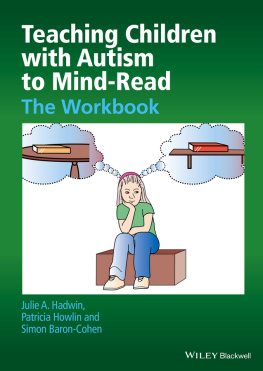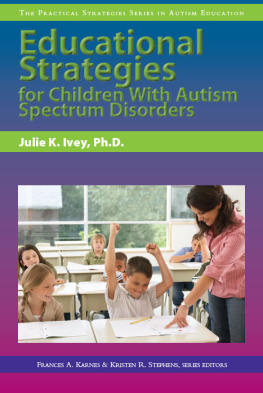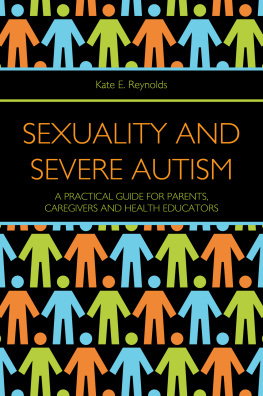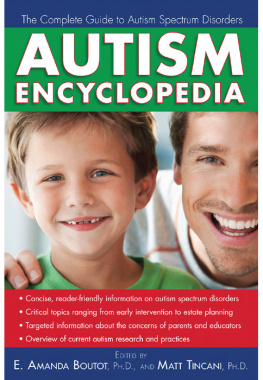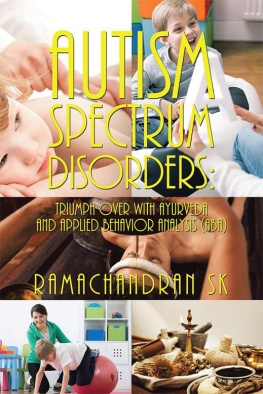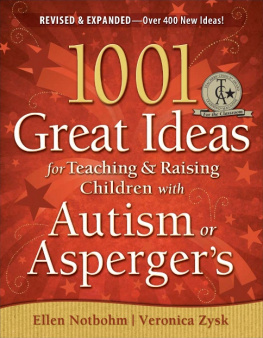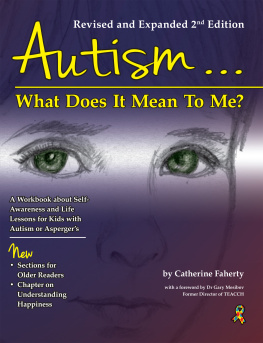
Praise for Teaching Children with Autism to Mind-Read: The Workbook
This is a much-awaited revision of Howlin, Baron-Cohen, and Hadwin's 1999 volume Teaching Children with Autism to Mind-Read that includes expanded lessons and concepts to teach high-functioning children with autism about mental states. The approach is importantly developmentalbased on prior research and progressive sequences of concepts and stages of instruction. It includes multiple foci, including teaching about differences in perspectives, about beliefs, about knowledge acquisition, and more. No one thinks that teaching mental-state understandings will address all the social-cognitive challenges faced by children with autism, but understanding the mental states of self and other is an acknowledged and crucial challenge for these children and young people (and adults) and one that this workbook carefully and effectively addresses. It is a lively and practical book that will be a tremendous resource for parents and educators.
Henry Wellman, Harold W. Stevenson Collegiate Professor of Psychology, University of Michigan
Without being aware of it we all continuously attribute mental states, such as desires and beliefs, to other people, and in this way we predict what they are going to do next. This is what children and adults with autism cannot do spontaneously. But, years of painstaking research has shown that they can be taught to do it. Clearly, this does not turn them into spontaneous mentalizers, but it does benefit their understanding of the otherwise unpredictable social world.
This Workbook contains teaching aids in picture and story form that are bound to inspire teachers. The general approach is to build up a sequence of skills in line with the sequence observed in typical development; from joint attention, to pretend play, to perspective taking, to understanding desire and more complex informational mental states such as knowledge and ignorance, and finally complex second order beliefs (e.g. he thinks that she believes he is telling the truth). It is with these complex mental states that the new workbook has expanded most over the previous one.
This manual provides an invaluable source of ideas and techniques on how to teach children and adults with autism about mental states, and it never loses sight of the need to link this teaching to their social skills in everyday life.
Professor Uta Frith, University College London, UK
The Workbook joins the authors' seminal Teaching Children with Autism to Mind-Read: A Practical Guide for Teachers and Parents in providing research-based protocols for developing and advancing mentalizing skills and social cognition in children with autism spectrum conditions. It extends the program provided in the book, offering scientifically validated, though clear and simple-to-use, principles for the understanding of informational states, as well as illuminating stories, examples and activities, promoting the generalization of the principles acquired.
The Workbook is highly recommended for parents, teachers, and clinicians wishing to base their work on rigorous scientific knowledge of how the understanding of others' minds works, and how it can be improved in children and adolescents on the autistic spectrum.
Dr Ofer Golan, Head of the Child Clinical Program, Bar-Ilan University, Israel
The difficulties faced by children with autism in understanding the workings of other minds are instinctive and pervade all aspects of social development. This practical workbook applies research that shows that such a developmental approach may be helpful in laying the foundations for reciprocal social understanding. It will be useful to parents and teachers and other professionals working with children with autism.
Richard Mills, Research Director, Research Autism, UK
This edition first published 2015
2015 John Wiley & Sons Ltd.
Wiley-Blackwell is an imprint of John Wiley & Sons, formed by the merger of Wiley's global Scientific, Technical, and Medical business with Blackwell Publishing.
Registered Office
John Wiley & Sons Ltd, The Atrium, Southern Gate, Chichester, West Sussex, PO19 8SQ, UK
Editorial Offices
The Atrium, Southern Gate, Chichester, West Sussex, PO19 8SQ, UK
9600 Garsington Road, Oxford, OX4 2DQ, UK
350 Main Street, Malden, MA 02148-5020, USA
For details of our global editorial offices, for customer services, and for information about how to apply for permission to reuse the copyright material in this book please see our website at www.wiley.com/wiley-blackwell.
The right of Julie A. Hadwin, Patricia Howlin and Simon Baron-Cohen to be identified as the authors of this work has been asserted in accordance with the UK Copyright, Designs and Patents Act 1988.
All rights reserved. No part of this publication may be reproduced, stored in a retrieval system, or transmitted, in any form or by any means, electronic, mechanical, photocopying, recording or otherwise, except as permitted by the UK Copyright, Designs and Patents Act 1988, without the prior permission of the publisher.
Wiley also publishes its books in a variety of electronic formats. Some content that appears in print may not be available in electronic books.
Designations used by companies to distinguish their products are often claimed as trademarks. All brand names and product names used in this book are trade names, service marks, trademarks or registered trademarks of their respective owners. The publisher is not associated with any product or vendor mentioned in this book. This publication is designed to provide accurate and authoritative information in regard to the subject matter covered. It is sold on the understanding that the publisher is not engaged in rendering professional services. If professional advice or other expert assistance is required, the services of a competent professional should be sought.
Library of Congress Cataloging-in-Publication Data
Hadwin, Julie A.
Teaching children with autism to mind-read : the workbook / Julie A. Hadwin,
Patricia Howlin, Simon Baron Cohen.
p. cm.
Includes bibliographical references and index.
ISBN 978-0-470-09324-5 (pbk.)
1. Autistic childrenEducation. 2. Social interactionStudy and teaching. 3.
Communicative disorders in childrenTreatment. I. Baron-Cohen, Simon. II.
Hadwin, Julie A. III. Title.
LC4717.H69 2011
371.94 dc22
2010029813
Chapter 1
Introduction
Introduction to Theory of Mind
Individuals with autism spectrum conditions (ASC) have difficulties in social interaction and communication, alongside repetitive and stereotyped behaviors and unusually narrow interests.1 Social interaction difficulties include indifference or aloofness towards other people, problems understanding and responding to social cues or displaying inappropriate social behavior. For example, individuals with ASC may display less eye contact and make fewer gestures when speaking with others. In addition, they may show atypical body posture or proximity when interacting (e.g., an awkward or unusual gait, or standing too close to another person or talking in too loud a voice). In these situations individuals with ASC often do not have a good enough understanding of the unspoken rules of conversation, or the social norms required to interact effectively with others.
Theory of mind
Effective social interaction requires an understanding of the mental states of others, including their beliefs, emotions, intentions and desires. Theory of mind (ToM) is a term used to encompass an individual's ability to understand mental states in order to make predictions about a person's behavior.2 A substantial body of research has shown that individuals with ASC show difficulties and delays in understanding the thoughts and feelings of other people and in demonstrating that people can have thoughts and feelings that differ from each other and their own.3
Next page
